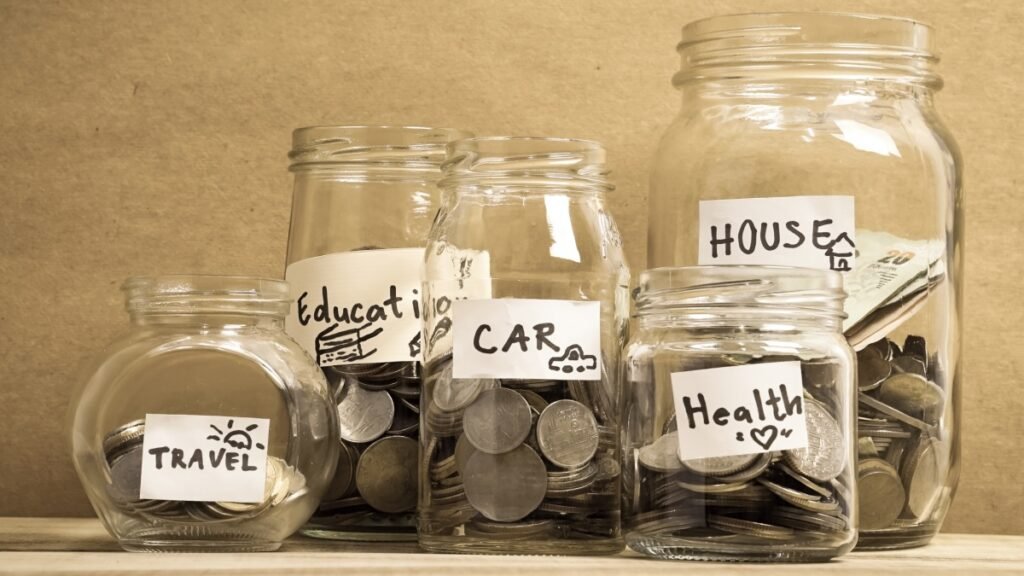How to Save for a Big Purchase Without Going Broke

Making a big purchase, whether it’s a new car, a home renovation, a vacation, or an expensive gadget, requires careful planning and discipline. It can be tempting to charge everything to your credit card or take out a loan, but that can lead to debt, high interest rates, and unnecessary stress. Instead, learning how to save for a big purchase without going broke is key to achieving financial goals while maintaining your financial well-being.
In this article, we’ll walk you through strategies to save money efficiently, budget wisely, and make smarter financial decisions to ensure you don’t go overboard when making that big purchase.
1. Set a Clear Goal and Timeline
Before you begin saving, the first step is to set a clear goal and timeline. This helps create a sense of direction and urgency, making it easier to stay motivated throughout the process.
Define the Big Purchase
Start by identifying what you want to buy. It could be a luxury item, a new appliance, or a once-in-a-lifetime experience. Be specific about the item or experience you’re saving for, as this will make your goal feel more tangible and achievable.
Establish a Timeline
Next, determine when you want to make the purchase. Having a clear timeline will allow you to break down your savings goal into smaller, manageable milestones. For example, if you plan to purchase a $5,000 car in 12 months, you’ll need to save approximately $417 a month. Knowing the timeframe helps you pace your savings effort and stay focused.
2. Create a Realistic Budget
Once you’ve set a clear goal, the next step is to create a realistic budget. A budget helps you track your income and expenses and identify areas where you can cut back to put money toward your savings.
Track Your Spending
The first step in creating a budget is tracking your spending. Use a budgeting app, a spreadsheet, or even pen and paper to monitor your expenses for a month. By categorizing your expenses (e.g., groceries, entertainment, utilities), you’ll be able to see where your money is going.
Cut Unnecessary Expenses
Look for areas where you can cut back. This could mean cooking more meals at home instead of dining out, limiting impulse buys, or canceling subscriptions you rarely use. Every dollar saved can be redirected into your savings fund.
Allocate Funds to Savings
Once you have an idea of where your money is going, allocate a portion to your savings goal. Set aside a specific amount each month, and treat it like a non-negotiable expense. You could even set up an automatic transfer to a dedicated savings account to make saving easier.
3. Set Up a Separate Savings Account
One of the best ways to save for a big purchase without dipping into your regular spending funds is by opening a separate savings account. This helps you keep your savings isolated from your day-to-day expenses, making it easier to track your progress and resist the temptation to spend.
High-Yield Savings Account
Consider opening a high-yield savings account to maximize your savings. These accounts typically offer higher interest rates, which means your money will grow faster. Even though the interest might be minimal, over time, it can add up and give you a small bonus toward your goal.
Avoid Easy Access
Ensure that the account you set up for your big purchase is not linked to your primary checking account or debit card. This makes it less likely you’ll dip into the savings for impulse buys or unnecessary purchases.
4. Find Additional Income Streams
Sometimes saving just isn’t enough, especially if you’re aiming for a large purchase. Increasing your income can speed up the process and make your savings goal more achievable.
Side Gigs
Consider taking on a side job or freelance work. Websites like Fiverr, Upwork, or TaskRabbit allow you to find opportunities based on your skills, from writing and graphic design to home repairs and tutoring. Even an extra $200 per month can significantly reduce the time it takes to reach your goal.
Sell Unused Items
You may have items lying around your home that you no longer use. Sell clothes, electronics, furniture, or other items online through platforms like eBay, Facebook Marketplace, or Poshmark. The extra cash can be put directly into your savings account.
Gig Economy Jobs
Another option is participating in the gig economy through services like Uber, DoorDash, or Postmates. These platforms offer flexible hours and can be a great way to make extra cash when you have free time.
5. Cut Back on Luxuries Temporarily
When saving for a big purchase, it’s important to reevaluate your luxury spending. While treating yourself occasionally is necessary, scaling back on non-essential purchases can free up a significant amount of money for your goal.
Minimize Dining Out
Dining out or ordering takeout can add up quickly. Try cooking at home more often and packing lunches for work. Meal prepping can help save both time and money while ensuring you’re eating healthy.
Cancel Unnecessary Subscriptions
Take a close look at all the subscriptions you have, including streaming services, gym memberships, and magazine subscriptions. Cut out any that you don’t use regularly or that are no longer adding value to your life.
Delay Purchases
When considering an impulse purchase, pause and ask yourself if it’s truly necessary or if it will delay your ability to reach your goal. Postpone smaller, non-urgent purchases to stay focused on your bigger goal.
6. Automate Your Savings
One of the easiest ways to ensure consistent savings is by automating the process. This way, you don’t have to think about saving every month, and you won’t be tempted to spend the money elsewhere.
Set Up Automatic Transfers
Most banks allow you to set up automatic transfers between accounts. You can schedule a transfer from your checking account to your savings account every payday, so you’re consistently contributing toward your goal.
Use Round-Up Apps
Some apps, like Acorns, automatically round up your purchases to the nearest dollar and invest the spare change. While this may not make a significant dent in your savings for a big purchase, it can help you save without even thinking about it.
7. Stay Motivated and Track Your Progress
Saving for a large purchase can be a long process, and it’s easy to lose motivation along the way. Here are some tips to help you stay on track:
Visualize Your Goal
Create a vision board or use a savings tracker to visualize your goal. Every time you make progress, mark it on the tracker. Seeing the results can keep you motivated and remind you why you’re making sacrifices.
Celebrate Milestones
When you reach smaller milestones, celebrate! This could mean treating yourself to something small, like a favorite meal or a day out. Rewarding yourself for your hard work keeps the process fun and helps prevent burnout.
8. Avoid Going into Debt
While it might be tempting to finance a big purchase or take out a loan, doing so can lead to paying much more in the long run due to interest rates. Always try to save up for a big purchase before pulling the trigger.
Understand the Consequences of Debt
Going into debt for a big purchase can place a strain on your finances and credit score. Avoid high-interest loans or credit card debt by saving up and purchasing with cash.
Stick to Your Budget
Even when you’re close to reaching your savings goal, stick to your original budget. Don’t get tempted to overspend just because you’ve saved a significant amount.
Conclusion
Saving for a big purchase doesn’t have to be stressful or overwhelming. By setting clear goals, creating a budget, automating your savings, finding additional income streams, and cutting back on unnecessary luxuries, you can achieve your goal without sacrificing your financial well-being.
The key is consistency, discipline, and patience. With time and effort, you’ll be able to make that big purchase while staying financially stable. Whether it’s a car, a dream vacation, or a home renovation, the satisfaction of reaching your goal without going broke will be worth the effort!



